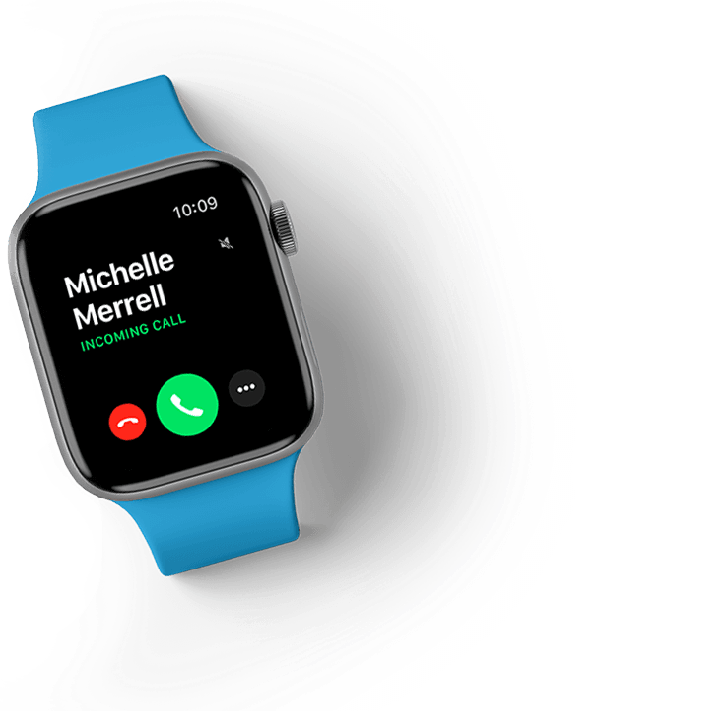Taking care of your health is important, but it’s not always easy. In America, most types of health coverage are tied to employment, but regardless of whether or not you even have insurance, getting into a healthcare provider under the traditional system is difficult and time-consuming. Moreover, there’s no guarantee you get the quality care you deserve from providers who are forced to see a heavy patient load each day.
However, there are other options besides—or even in addition to—work-sponsored health insurance plans. Whether as a supplement to health insurance or as an option on its own, direct primary care enables more people to see doctors and receive the treatment and advice that they need to stay healthy.
What Is Direct Primary Care?
Direct care, also called direct primary care or DPC, is a healthcare model that allows people to visit a doctor regardless of what health insurance they have or don’t have. Because these facilities do not submit insurance claims, they don’t have to worry about enforcing negotiated rates and can offer more competitive pricing for services than insurance-based health clinics, passing down their wholesale pricing on services and medications to their patients so you pay less for the high-quality care you need and deserve.
The most common way for people to engage with direct primary care is to pay a “subscription” fee, either monthly or annually. In exchange for this fee, they receive access to medical care and a range of services as offered by the DPC facility. Most often, patients are free to see their doctor as often as they would like while under the payment plan that they have agreed to with the direct care office.
Direct Care vs. Traditional Insurance
Direct care is a both/and relationship, which means that there’s a notable benefit to having both DPC and standard employer-based health insurance or marketplace coverage. However, there are some differences in what your appointments will look like.
The Appointment: Direct Care
If you opt for a direct primary care plan, your appointments can happen on your schedule. Most plans allow for 24/7 access to doctors in the form of telehealth visits and secure text messaging. If you visit a provider in person, you may notice that DPC physicians tend to spend more time with their patients. This is because they accept fewer patients per day so that they can provide more personalized care and establish a relationship with each patient.
You won’t spend any time at the office scanning insurance cards or discussing billing codes, because direct primary care facilities don’t accept insurance of any kind. However, they are more than happy to work with patients who have insurance, whether through an employer, via Medicare or Medicaid, or as an individual policy through marketplaces like the ACA, and many DPC patients do. DPCs will scan a copy of the patient’s insurance card to keep in their file should a referral be needed down the road. Then, the DPC clinic will have the information necessary to send along with the referral and to ensure the specialist they’re sending you to is in your network. So, while DPC won’t bill the insurance for the visit or for certain procedures that aren’t covered under the membership fee, you will still be able to get the care you need under your insurance without incurring additional charges from DPC.
Once you see your doctor, you’ll establish a treatment plan. All services provided by the DPC clinic are covered under the monthly membership fee and you can see your provider as often as you need without paying more; prescription medications and lab work are offered at our wholesale cost. If your plan includes testing or other treatment that isn’t offered through the DPC clinic, a DPC provider can refer to you a trusted network of specialists and facilities that accept affordable cash pricing or are within your insurance network.
The Appointment: Traditional Insurance
Those using traditional insurance may or may not have access to telehealth visits, which means they often-times have to be seen in person. These visits tend to be spaced further apart than DPC, because doctors try to fit in as many patients as possible (DPC doctors tend to have between 350 and 800 patients, seeing an average of 6-10 a day, while PCPs often have upwards of 2500-3000, seeing 25-30 patients a day).
When you arrive for your appointment, you’ll need to confirm your insurance information with the office. They’ll check to make sure that the doctor is a participating provider in your plan. If not, you’ll have to visit a different physician or pay the out-of-pocket rate for the appointment. Then, you’ll visit with the doctor; visits with traditional insurance tend to be short, because the doctor has a lot of patients on their schedule.
Once you’ve discussed potential treatments, the doctor will refer you out for any diagnostics or additional care. You’ll need to check that these facilities also accept your insurance. If you’ve met your deductible for the year, the cost of your appointment and any testing may change from what you’re used to paying.
Using Direct Primary Care to Complement Your Regular Insurance
Direct primary care is a useful tool, but it can be especially beneficial when paired with traditional insurance. Here’s how.
Using DPC to supplement insurance
Direct primary care allows people to see doctors for a set subscription fee, but that doctor’s practice might not offer everything that they need. Services that are not always covered in direct care memberships include:
- Prescriptions
- Imaging
- Lab work
- Colonoscopies
- Biopsies
However, these and other services are very important to living a healthy life. If they aren’t covered in your membership, the DPC clinic may be able to offer them at a wholesale rate. If these services aren’t offered at your DPC clinic, you will need to seek care somewhere else, which is where traditional insurance will be helpful.
By combining direct primary care and traditional insurance, patients can get regular access to care for minor concerns and general wellbeing while simultaneously retaining the ability to undergo more complex procedures, surgeries, diagnostics, and more at larger facilities. Additionally, direct primary care does not qualify as minimum essential coverage, so you’ll likely need some form of insurance anyway.
With direct primary care, having traditional insurance is preferred, but it is not necessary for you to receive the care you need. Even uninsured patients can still get quality healthcare; nearly 20% of the patients Primary Health Partners serves have no insurance at all.
Using DPC with Medicaid, Medicare, and other government health programs
Direct primary care does not place limits on who can be seen; if you have Medicare or another government healthcare plan, you can still be seen by a direct care provider. However, your Medicare or other coverage will have no bearing on the appointment.
Even though DPC does not file insurance claims for clinic services, nearly all services performed in-house at a DPC clinic are covered by the membership fee, which means for those services, you won’t pay anything extra or receive a huge bill if you need them. For example, an EKG is a standard test that’s often necessary for Medicare and Medicaid patients. At a DPC clinic that offers EKGs, the test is covered by the membership–no office visit copay and no separate cost to the patient. Labs will be drawn in the clinic, but the lab will bill the insurance plan, which could potentially cover 100%, depending on the plan.
By filling medication prescriptions at a DPC clinic, many Medicare and Medicaid patients save enough money to offset part–if not all–of the membership fee, allowing them to get both quality provider care and any medications or treatment for the same out-of-pocket cost. Moreover, many Medicare and Medicaid patients choose DPC because it’s reminiscent of how healthcare used to be and can be again, with more time with their doctor and a real doctor-patient relationship.
Using an FSA or HSA to pay for direct care
Although DPC membership fees are not considered a qualified medical cost for Health Savings Accounts (HSAs), they can be paid for using Flexible Spending Account (FSA) dollars. However, your HSA can be used to cover lab work and certain other procedures or products (like prescriptions) recommended by your DPC provider..
Using direct care with other health insurance benefits
Patients who use direct care do not forfeit other health insurance benefits and are encouraged to utilize other health insurance benefits that may apply to them so that they can receive the most comprehensive care possible. As many as 80% of people who visit direct primary care offices do carry some type of health insurance. There are limitations to direct care in that not all types of potentially necessary services are available within the clinic, so together with an insurance plan, patients gain a more robust and complete healthcare experience.
Using direct care programs in different states
The core experience of a direct primary care program will be the same no matter where you go: you’ll pay for a membership, the practice won’t bill your insurance, and patients gain access to their direct care offices 24/7. However, certain states will have additional changes or practices to be aware of. For example, Texas doesn’t allow DPC clinics to dispense prescriptions from the clinic but can send all prescriptions to the retail pharmacy of the patient’s choice. Some facilities will choose not to include testing like EKGs in their membership, while others will. Be sure to read the details of your agreement before you commit to a particular direct care practice or plan.
Discover the Benefits of Direct Primary Care with Primary Health Partners
Direct primary care is not a one-for-one replacement for health insurance coverage, but it is an excellent complement that helps patients address a wide range of health concerns before they become bigger problems. By allowing patients more time with their doctors, improving communication, and encouraging doctor-patient relationships, direct primary care can augment the advanced imaging, diagnostics, and treatments covered under traditional insurance for better health outcomes. At Primary Health Partners, we make your health personal, providing customized care that’s easy, convenient, and affordable. Skip the runaround and the waiting and start receiving the individualized attention you deserve at a PHP location near you. Our providers are always just a call or text away, and always available for same-day or next-day visits. Whether you’re a patient looking for a direct care provider in your area or an employer who would like to support employees in accessing direct primary care, Primary Health Partners can help, so call today

